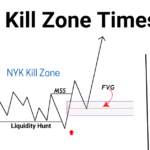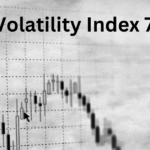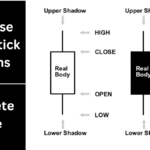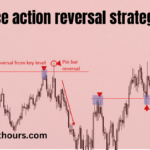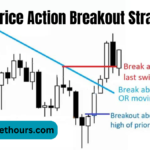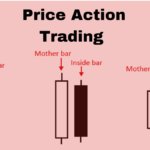Daylight Saving Time (DST) is a practice adopted by several countries worldwide, where the clocks are set forward by one hour during the warmer months to extend evening daylight. This shift typically occurs in the spring and is reversed in autumn. The concept behind DST is to make better use of daylight during the longer days of the year, thereby conserving energy and providing more daylight for after-work activities.
The idea of DST was first proposed by Benjamin Franklin in 1784 as a joke, but it wasn’t seriously considered until more than a century later. The modern concept of DST was first implemented during World War I by Germany and its allies in an effort to conserve coal used for heating and lighting. The idea was to maximize daylight hours during the warmer months to reduce the need for artificial lighting, thereby saving energy. The practice quickly spread to other countries, including the United States and Britain.
Daylight Saving Time (DST) is observed in various forms around the globe, reflecting diverse approaches to the concept based on geographic, cultural, and political considerations. The adoption and implementation of DST can vary significantly from one country to another, leading to a complex global landscape.
Adoption
DST is predominantly observed in North America, Europe, and parts of the Middle East and Oceania. In the United States and Canada, most regions switch their clocks, except for some states and territories that have opted out, such as Arizona in the U.S. and most regions of Saskatchewan in Canada. Europe broadly follows DST, with almost all countries advancing their clocks in spring and setting them back in autumn.
Conversely, most countries near the equator do not observe DST, as the daylight hours in these regions remain relatively consistent throughout the year, negating the perceived benefits of shifting clocks. Similarly, many countries in Asia and Africa do not follow DST, with notable exceptions like Israel and parts of Australia.
Variations
The start and end dates of DST can vary significantly by country, leading to a lack of uniformity in its observance. For instance, in the United States, DST begins on the second Sunday in March and ends on the first Sunday in November. European countries, however, typically start DST on the last Sunday in March and end it on the last Sunday in October. These differences can occasionally lead to confusion in international communications and travel.
Some countries have unique adaptations of DST. For example, in Australia, which spans multiple time zones, DST is observed in the southern and eastern states but not in Queensland, the Northern Territory, or Western Australia. This leads to even greater time discrepancies across the country during the DST period.
Recent Changes
Several countries and regions have reconsidered their stance on DST in recent years, leading to changes in their observance. For example:
- Russia decided to adopt permanent DST in 2011 but reversed this decision in 2014, opting for permanent standard time instead due to negative public feedback about the late sunrise times in winter.
- Turkey stopped observing DST in 2016, choosing to remain on permanent DST to have more daylight hours in the evenings.
- The European Union (EU) has proposed a directive to end the bi-annual clock changes from 2021 onwards, allowing member states to choose between permanent standard time or permanent DST. However, this proposal has not yet been fully implemented across the EU.
- Chile has extended its DST period in recent years, now observing DST for about eight months of the year, from September to April.
Daylight Saving Time Impact On Forex
Daylight Saving Time (DST) can have various impacts on forex (foreign exchange) trading, primarily due to the shifts in market hours and trading activity patterns. The forex market is unique because it operates 24 hours a day during the business week, with trading moving through major financial centers around the world, from Sydney to Tokyo, London, and New York. Since these cities may observe DST at different times (if at all), the relative alignment of trading hours between these financial centers can change throughout the year.
The below table helps visualize how trading session times shift during DST and the specific periods during the year when these changes take place. It’s crucial for forex traders to be aware of these adjustments to synchronize their trading activities with the most active market hours and to take advantage of the increased trading volume and liquidity during these times.
| Forex Market | Standard Time (GMT) | DST Time (GMT) | DST Start | DST End |
|---|---|---|---|---|
| Sydney | 10:00 PM – 7:00 AM | 9:00 PM – 6:00 AM | First Sunday in October | First Sunday in April |
| Tokyo | 12:00 AM – 9:00 AM | Unchanged (Japan does not observe DST) | N/A | N/A |
| London | 8:00 AM – 5:00 PM | 7:00 AM – 4:00 PM | Last Sunday in March | Last Sunday in October |
| New York | 1:00 PM – 10:00 PM | 12:00 PM – 9:00 PM | Second Sunday in March | First Sunday in November |
When is the DST time of the New York trading session observed?
The Daylight Saving Time (DST) for the New York trading session is observed starting on the second Sunday in March, when clocks are set forward by one hour. DST ends on the first Sunday in November, when clocks are set back to standard time. During DST, the New York trading session operates from 12:00 PM to 9:00 PM GMT.
Is Tokyo Session Follow DST Time?
Tokyo Session does not follow Daylight Saving Time (DST). Tokyo opens at 9:00 AM and closes at 6:00 PM local time (JST) year-round, without any adjustments for DST.
How does the London forex market change when DST starts and ends?
Daylight Saving Time (DST) is observed in the London Session, typically starting on the last Sunday of March and ending on the last Sunday of October, the trading hours of the London forex market shift accordingly.
When Sydney Market Observed Daylight Saving Time?
The Sydney market observes Daylight Saving Time (DST) typically starting on the first Sunday of October and ending on the first Sunday of April. During this period, the market adjusts its trading hours to align with the new time.
